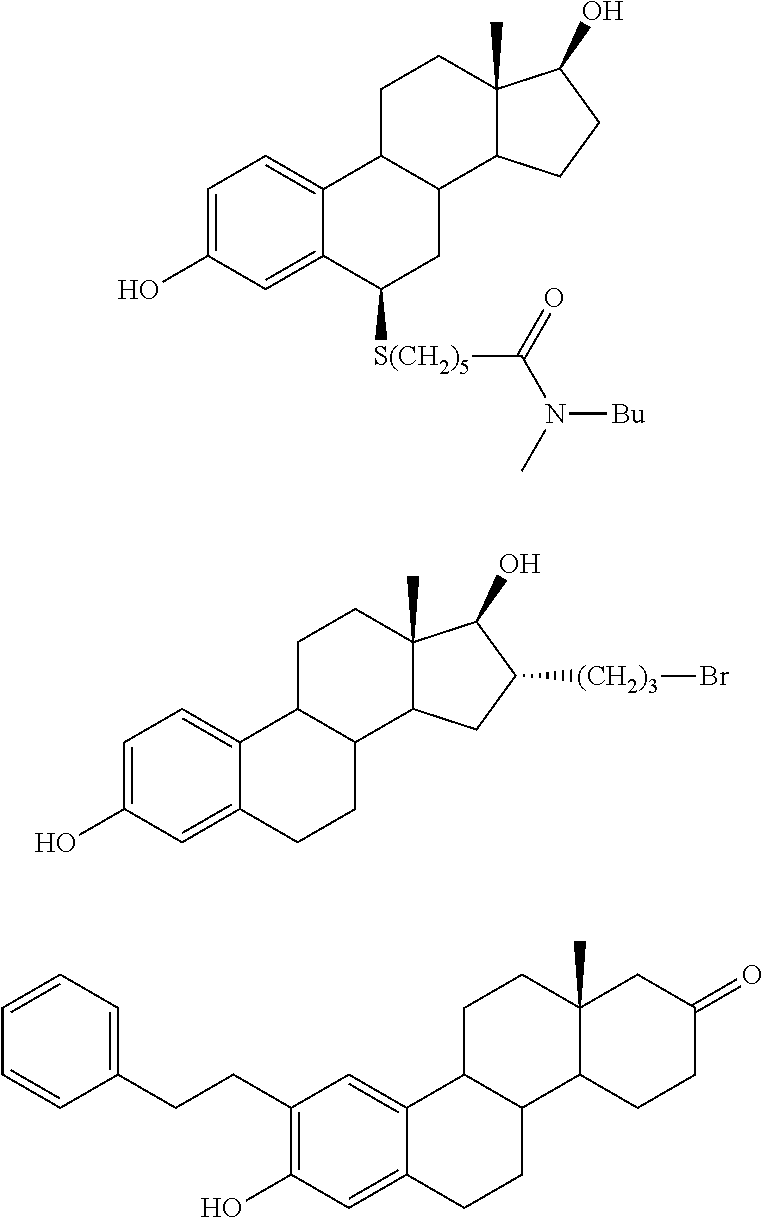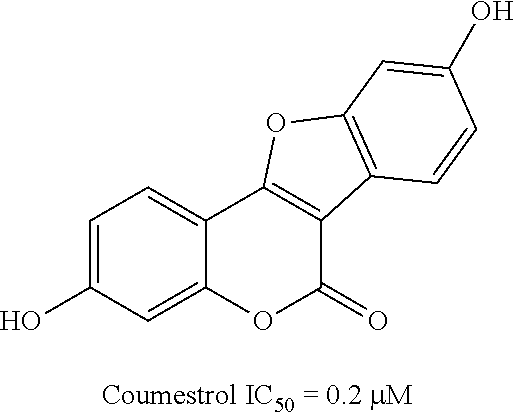17beta-hydroxysteroid dehydrogenase type 1 inhibitors for the treatment of hormone-related diseases
a technology of steroid dehydrogenase and inhibitors, which is applied in the direction of biocide, plant growth regulators, animal husbandry, etc., can solve the problems of reducing the use of danazole, and affecting the effect of steroid dehydrogenas
- Summary
- Abstract
- Description
- Claims
- Application Information
AI Technical Summary
Benefits of technology
Problems solved by technology
Method used
Image
Examples
example 1
Chemical and Physical Characterization of the Synthesized Compounds
1. 1-(3-Methoxyphenyl)-2-[(4-methoxyphenyl)amino]ethanone
[0087]
[0088]Synthesis: In cooled DMF, 1.87 mmol of p-anisidine, 1.87 mmol of 3-methoxyphenacylbromide and 1.87 mmol of triethylamine are stirred for 7 hours and then poured on ice. The precipitate obtained is filtered, dried and purified by column chromatography (hexane / ethyl acetate 6:4); yield: 70%, yellow powder, Rf: (hexane / ethyl acetate 5:5) 0.79; 1H NMR (CDCl3, 500 MHz): 7.55-7.57 (dt, J=1.50 Hz and J=7.80 Hz, 1H, Harom), 7.51 (m, 1H, Harom), 7.38 (t, J=7.80 Hz, 1H), 7.12-7.14 (ddd, J=0.60 Hz, J=2.50 Hz and J=8.80 Hz, 1H, Harom), 6.80 (dd, J=2.20 Hz and J=8.80 Hz, 2H, Harom), 6.66 (dd J=2.20 Hz and J=8.80 Hz, 2H, Harom), 4.54 (s, 2H), 3.85 (s, 3H, OMe), 3.73 (s, 3H, OMe); 13C NMR (CDCl3, 125 MHz): 195.40, 160.00, 152.45, 141.45, 136.35, 129.85, 120.15, 120.10, 115.00, 114.35, 112.25, 55.80, 55.50, 51.45; IR: 3383, 2693, 1686, 1511, 1232, 784 cm−1.
2. 1-(4-...
example 2
[0345]Determination of the inhibitory activity of the potential inhibitors: Inhibition of 17β-HSD1 and 17β-HSD2: In both cases, human placenta served as the enzyme source (Lin, S.-X. et al., J. Biol. Chem., 267: 16182-16187 (1992)).
[0346]In the 17β-HSD1 test, NADH is employed as a cosubstrate at a final concentration of 500 μM in order to avoid the product inhibition occurring with NADPH. The enzyme preparation is diluted with test buffer to such an extent that the control conversion is 10 to maximally 20% (about 1:650). As the substrate, estrone in a final concentration of 500 nM is used, of which 3 nM is tritiated. 2,4,6,7-[3H]estrone is purchased from Perkin-Elmer, Boston. The inhibitor is added as a solution in DMSO (control: pure DMSO without inhibitor; the final concentration of DMSO in the assay is 1% in all cases). After the addition of the substrate, incubation is performed at 37° C. for 10 minutes, followed by quenching by the addition of HgCl2 (final concentration of HgCl...
PUM
 Login to View More
Login to View More Abstract
Description
Claims
Application Information
 Login to View More
Login to View More - R&D
- Intellectual Property
- Life Sciences
- Materials
- Tech Scout
- Unparalleled Data Quality
- Higher Quality Content
- 60% Fewer Hallucinations
Browse by: Latest US Patents, China's latest patents, Technical Efficacy Thesaurus, Application Domain, Technology Topic, Popular Technical Reports.
© 2025 PatSnap. All rights reserved.Legal|Privacy policy|Modern Slavery Act Transparency Statement|Sitemap|About US| Contact US: help@patsnap.com



